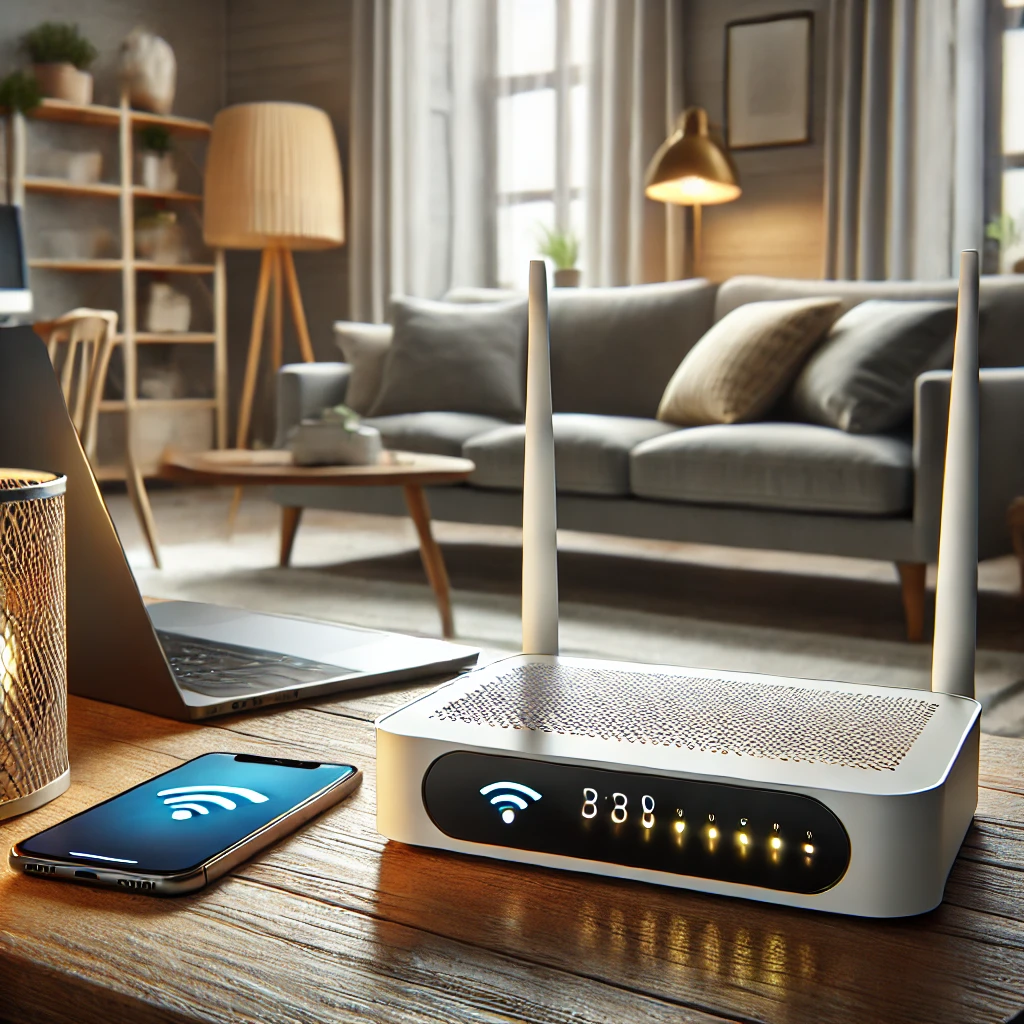
1. Understand the Causes of Wi-Fi Disconnections
What is Wireless Interference? Why Your Wi-Fi Signal Drops
Wireless interference is one of the most common reasons for unstable Wi-Fi connections. It occurs when other electronic devices or nearby networks interfere with your Wi-Fi signals. Devices such as microwaves and Bluetooth gadgets can disrupt signals, especially if they share the same 2.4 GHz frequency band.
For instance, if you notice disconnections when using a microwave, try relocating your router away from it. Similarly, using 5 GHz Wi-Fi instead of 2.4 GHz can minimize interference.
Router Placement Could Be the Problem: Optimal Placement Tips
The placement of your router plays a vital role in maintaining stable Wi-Fi connections. Placing the router on the floor or behind large furniture can block signals.
Ideally, position your router centrally within your home and on a higher surface, such as a shelf. This ensures the signals reach every corner. Additionally, avoid placing it near metal objects or thick walls that can absorb the signals.
Too Many Connected Devices? Check Your Network Load
Overloading your network with multiple devices can strain the connection. Smartphones, smart TVs, and other smart devices all share the same bandwidth.
For example, if every family member streams videos simultaneously, the connection may drop. You can use the Quality of Service (QoS) settings in your router to prioritize certain devices or activities for smoother performance.
2. Properly Configure Your Router
Reboot Your Router for a Quick Fix
Rebooting your router is a simple yet effective way to resolve many Wi-Fi issues. Routers can accumulate cache over time, which may slow performance.
For example, if your connection frequently drops, turn off the router, wait a few minutes, and then turn it back on. This clears the cache and refreshes the connection.
Update Firmware to Ensure Stability
Keeping your router’s firmware up-to-date enhances both its performance and security. Outdated firmware can lead to connectivity problems and vulnerabilities.
Log into your router’s admin panel and check for updates. Most routers offer an option to update firmware with a few clicks. This process often resolves known bugs and improves stability.
Change the Channel to Avoid Interference
In crowded neighborhoods or apartment complexes, multiple routers often use the same Wi-Fi channels, causing interference.
Use a Wi-Fi analyzer app to identify less congested channels, and change your router’s settings to use one of them. This simple step can drastically improve your Wi-Fi reliability.
3. Strengthen Signals with Hardware Solutions
Add Extenders or Mesh Wi-Fi Systems
Wi-Fi range extenders and mesh systems are excellent options for larger homes. Extenders amplify the existing signal, while mesh systems use multiple nodes to provide seamless coverage.
For example, if your router is in the living room and you struggle to connect in the upstairs bedroom, placing an extender in a central hallway can bridge the gap effectively.
Upgrade to High-Performance Antennas
If your router’s signal strength is inadequate, consider installing high-performance external antennas. These antennas can extend the range and improve signal quality.
For example, directional antennas can target specific areas of your home, ensuring stable connectivity where needed most, such as in a home office.
Consider Replacing Outdated Routers
Older routers may not support the latest Wi-Fi standards, which are essential for optimal speed and connectivity. Upgrading to a router that supports Wi-Fi 6 can make a significant difference.
For instance, modern routers handle multiple devices efficiently and provide faster speeds, making them ideal for smart homes with several connected devices.
4. Review Environmental and Peripheral Factors
Check for Interference from Nearby Electronics
Devices like Bluetooth headsets and microwaves can interfere with Wi-Fi signals, especially when placed too close to the router.
For example, relocating your router to a room away from the kitchen can prevent signal disruptions caused by microwave use.
Minimize Obstacles Like Walls and Furniture
Thick walls and large furniture can block or weaken Wi-Fi signals. Moving the router to an open, central location can significantly improve connectivity.
For example, avoid placing the router inside a closed cabinet or next to heavy appliances like refrigerators.
Adjust Settings to Avoid Neighboring Network Interference
In densely populated areas, neighboring networks often overlap and cause signal congestion. Changing your router’s frequency band or channel can alleviate this issue.
Use your router’s admin panel to switch to a less crowded channel, based on analysis from a Wi-Fi scanner tool.
5. Consult Your Provider or Professionals
Measure Internet Speed to Identify Issues
Use online speed test tools to check your upload and download speeds. If the results are consistently below your service plan’s promised speeds, the issue might lie with your provider.
For instance, if streaming services buffer frequently, run multiple speed tests at different times to identify patterns.
Contact Your Internet Service Provider
If speed tests reveal issues, report them to your ISP. Be prepared to share details about your setup and the problems you’re facing for faster resolution.
For example, mention if the connection drops only during peak hours or after certain activities.
Hire a Professional for Advanced Solutions
If all else fails, consider consulting a professional network technician. They can optimize your home setup for maximum performance.
For instance, a technician can identify signal dead zones and recommend custom solutions, such as installing wired access points or upgrading to a better router.
Conclusion
Understanding the causes of Wi-Fi disconnections and addressing them systematically can significantly improve your internet experience. From optimizing router placement to consulting professionals, the solutions outlined above cater to various scenarios. By taking these steps, you can enjoy a stable and seamless Wi-Fi connection at home.



Comment